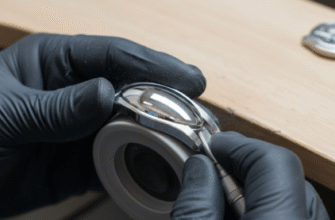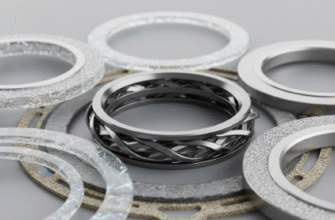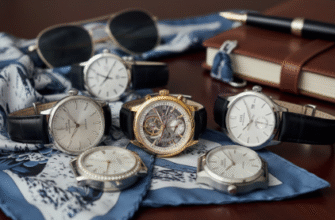Long before the digital scroll and the fleeting influencer post, the glossy pages of magazines held a unique power. It was here, in meticulously crafted print advertisements, that the identities of the world’s most iconic watch brands were forged. These weren’t just announcements of new products; they were carefully constructed narratives that sold aspirations, achievements, and legacies. Early watch advertising didn’t just shape public perception; in many ways, it created the very archetypes of luxury and performance that we associate with these timepieces today. The ink-and-paper campaigns of the 20th century were the foundational architects of horological lore.
Crafting Narratives in Ink
In the golden age of print, advertisers understood that they weren’t selling a tool to tell time. Clocks were ubiquitous and affordable. What they were selling was an identity. A watch was a companion, a status symbol, a piece of equipment for a life of adventure, or a treasured heirloom passed from one generation to the next. The advertisements became the vehicle for these powerful stories. Through compelling copy and evocative imagery, brands could transport the reader from their armchair to the summit of Everest, the cockpit of a supersonic jet, or a refined boardroom meeting. This was storytelling at its most potent, creating an emotional connection that transcended the mechanical object on the wrist.
The Power of Association
The core strategy was simple yet brilliant: associate the watch with remarkable people and extraordinary events. An advertisement wasn’t just about the watch’s features, like its water resistance or its self-winding movement. It was about who wore it and where they took it. This technique of “hero worship” was incredibly effective. Readers would see a celebrated explorer, a record-breaking pilot, or a captain of industry and subconsciously link their qualities—bravery, precision, success—to the watch they wore. The timepiece became a talisman, a wearable piece of that hero’s story.
Rolex: The Conqueror’s Companion
Perhaps no brand mastered the art of aspirational print advertising better than Rolex. From its earliest days, Rolex positioned itself not merely as a watchmaker, but as a partner in human achievement. Their strategy was to prove their watches’ mettle in the world’s harshest environments and then tell everyone about it in the most prestigious publications.
The ads rarely focused on luxury in the modern sense of glittering jewels or overt wealth. Instead, they showcased rugged durability and unwavering reliability. The copy spoke of “tests” and “proof.” The imagery often featured diagrams, testimonials from professionals, and photographs from grueling expeditions. This created an aura of unshakeable competence. A Rolex wasn’t just a watch; it was a professional instrument, a tool for those who pushed the limits. Whether you were a pilot, a deep-sea diver, or a corporate executive navigating the urban jungle, the underlying message was the same: a Rolex will not let you down when it matters most.
One of the most pivotal moments in this strategy was the 1927 campaign featuring Mercedes Gleitze. After she swam the English Channel, Rolex published a full-page ad on the front of the Daily Mail, celebrating her feat and the fact that her Rolex Oyster watch remained in perfect working order. This wasn’t just an ad; it was a public testament. It cemented the brand’s reputation for waterproofness and toughness in the public consciousness forever.
The “Testimonial” Ad
Rolex pioneered the testimonial advertisement format. They featured signed letters and portraits of professionals who relied on their timepieces. Pan Am pilots swore by the GMT-Master for tracking multiple time zones. Divers from COMEX praised the durability of the Sea-Dweller. These weren’t actors; they were real-world experts whose opinions carried immense weight. This approach built a fortress of credibility around the brand, making a Rolex the de facto choice for anyone who valued performance and reliability above all else.
Omega: The Pioneer’s Choice
While Rolex was conquering the Earth, Omega set its sights on the stars. Omega’s advertising narrative was one of precision, scientific exploration, and pioneering spirit. Their ads often had a more technical, almost futuristic feel to them. They emphasized the brand’s history of winning observatory precision trials, positioning the watch as a scientifically superior instrument.
The ultimate coup for Omega, of course, was its selection by NASA as the official watch for the Apollo program. The Omega Speedmaster becoming the first watch worn on the Moon was an advertising gift that was, quite literally, out of this world. Omega’s print campaigns immediately capitalized on this monumental achievement. Ads proudly proclaimed the Speedmaster as “The Moonwatch.” The imagery of astronauts in space, with the Speedmaster strapped to the outside of their suits, became iconic. This association instantly elevated the brand, imbuing it with a sense of adventure and cutting-edge technological prowess that was unmatched. It wasn’t just a watch; it was a piece of space history that you could wear on your wrist.
Patek Philippe: The Keeper of Tradition
At the other end of the spectrum was Patek Philippe. Their advertising didn’t feature adventurers or astronauts. Instead, it focused on an entirely different, yet equally powerful, human emotion: legacy. Patek Philippe’s print ads were a masterclass in subtlety and emotional marketing. They sold not a moment of high adventure, but a lifetime of shared memories.
The “Generations” Campaign
The launch of their “Generations” campaign in the 1990s, while later than the others, was the culmination of a brand identity they had been cultivating for decades. The famous slogan, “You never actually own a Patek Philippe. You merely look after it for the next generation,” perfectly encapsulated their message. The ads featured intimate, beautifully photographed scenes of fathers and sons, mothers and daughters. The watch was a silent observer, a link between generations. The copy was warm, personal, and evocative. It spoke of values, traditions, and the enduring bond of family. This campaign brilliantly positioned Patek Philippe not as a mere luxury good, but as a priceless family heirloom, an investment in your family’s story. It was a message that resonated deeply, creating an image of timeless elegance and profound personal significance that no tale of adventure could match.








